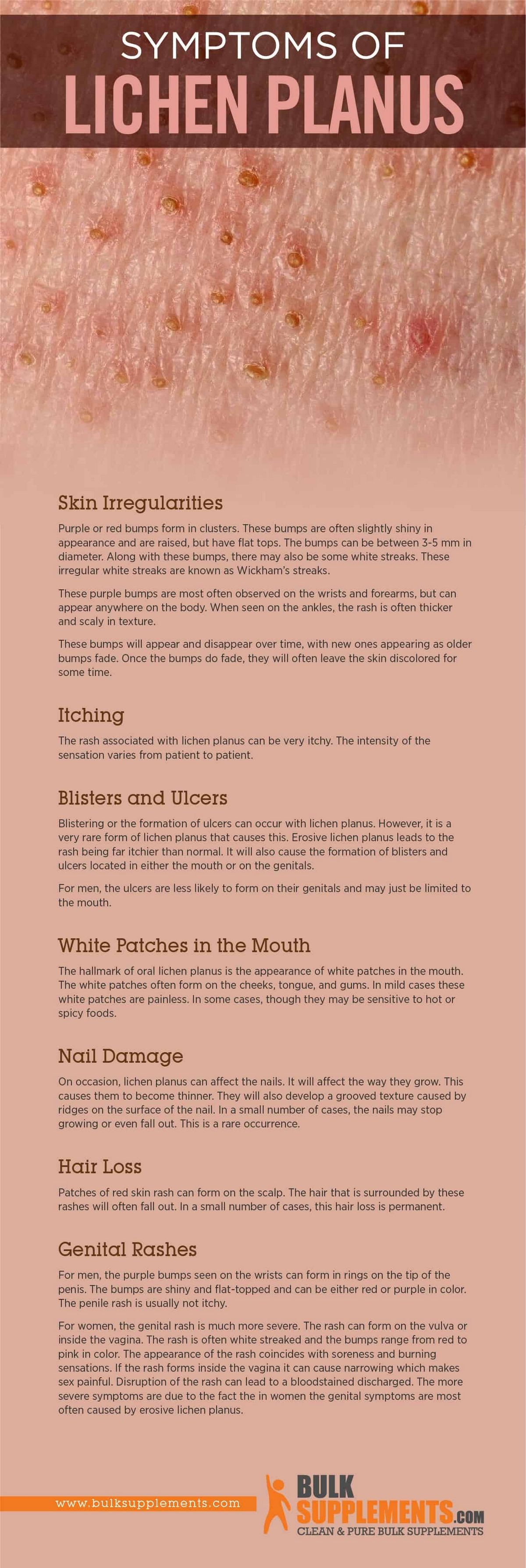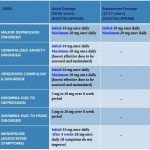
Contents
Lichen Planus
Lichen planus is a chronic inflammatory disorder of the skin and mucous membranes. It is characterized by small, flat-topped, polygonal bumps that may coalesce into rough, scaly plaques. It can also affect the lining tissue of the mouth and vagina.
Lichen planus is a poorly understood skin condition that resembles a simple plant, a lichen, growing on rocks and tree bark. The name "planus" is derived from the Latin word for flat.
Causes and Risk Factors
The cause of lichen planus is unknown. In some cases, patients with extensive lichen planus are more likely to have a hepatitis C virus infection. Certain drugs and chemicals can also produce a similar rash. Graft-versus-host disease can cause lichenoid eruptions in people who have received bone marrow transplants. A biopsy may be necessary to distinguish lichenoid drug eruptions from classical lichen planus.
Distinguishing Features of Lichen Planus
Lichen planus can be distinguished from other common rashes based on its clinical appearance. The lesions are small, flat-topped, shiny, polygonal, and purple to gray. They often appear at the wrists, elbows, and ankles. Thin white lines called Wickham’s striae may be present in each papule. Lichen planus can also occur at sites of trauma, especially along lines of scratches.
Symptoms and Signs
Lichen planus can cause varying degrees of itching. The onset can be sudden or gradual, and the duration of attacks can last for weeks or months. The bumps are initially small in size but may become larger and develop excess pigment over time. Lichen planus can also lead to hair follicle damage, nail malformation, and ulcerative lesions in the mouth or vagina.
Appearance of Lichen Planus
The appearance of lichen planus depends on whether it affects the skin or the lining of the mouth or vagina:
- Skin involvement: Lichen planus appears as lilac or violet to brown spots on the inner wrists, forearms, lower legs, and lower back.
- Hypertrophic lichen planus: This variant appears as thick, reddish-brown lesions covered with scales on the shins or other areas of the body.
- Atrophic lichen planus: This form produces slightly depressed lesions that resemble typical lichen planus.
- Mucous membranes: Lichen planus of the mucous membranes can appear as a white, lacy rash on the inside of the cheeks or vagina. It can also cause erosive ulcers in the mouth or genitals.
- Nail malformation: Lichen planus can affect the nails, leading to permanent deformities.
- Scalp involvement: Lichen planus can cause scarring balding on the scalp.
Diagnosis and Treatment
Lichen planus is usually diagnosed based on its appearance, but a skin biopsy may be necessary for confirmation. Treatment options include topical creams, injections of corticosteroids, oral medications, and therapy with ultraviolet light. Home remedies such as green tea may also be considered. Most cases of lichen planus resolve on their own, though certain medications may cause rashes that resemble lichen planus.
Prevention and Prognosis
Since the cause of lichen planus is unknown, there are no reliable preventive measures. Lichen planus usually goes away on its own with time. Some drug-related rashes that resemble lichen planus can be resolved by discontinuing the medication.
References:
Fazel, Nasim. "Cutaneous Lichen Planus: A Systematic Review of Treatments." J Dermatolog Treat, Early Online 1-4 (2014): 1471-1753.
Le Cleach, Laurence, and Olivier Chosidow. “Lichen Planus.” The New England Journal of Medicine 366 (2012): 723-732.
Lehman, J.S. "Lichen Planus." International Journal of Dermatology 48.7 (2009): 682-694.
Sharma, Amit, et al. "Lichen Planus: An Update and Review." Pediatric Dermatology 90 July 2012: 17-23.
Weston, Gillian, and Michael Payette. "Update on Lichen Planus and Its Clinical Variants." International Journal of Women’s Dermatology 1 (2015): 140-149.


